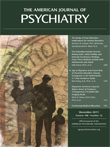Funding Information
Dr. Posner receives royalty payments for the electronic self-rated versions of the Columbia–Suicide Severity Rating Scale (eC-SSRS) from ERT, Inc., and is the director of the Center for Suicide Risk Assessment, which, as part of an effort to help execute the U.S. Food and Drug Administration's suicidality classification mandates, has received support from Abbott, Albany Molecular Research, Alfresa, Alkermes, Amgen, AstraZeneca, Biodelivery Sciences International, Biomarin, Bristol-Myers Squibb, Canam, Cato Research, Cephalon, Cetero Research, Covance, CRI Worldwide, Depomed, Douglas Pharmaceuticals, Eisai, Euthymics, Forest, GlaxoSmithKline, GW Pharma, Human Genome Sciences, i3 Research, ICON, IntelGenx, Intracellular Therapies, Johnson & Johnson, Kendle Early Stage, Lilly USA, Lundbeck A/S, Lundbeck USA, MedImmune, Medtronic, Merck, Neurosearch, Next Wave Pharmaceuticals, Novartis, Noven, NovoNordisk, Orexigen, Otsuka, Parexel, Pfizer, PGx Health, Pharmaceutical Product Development, Inc., Psyadon, QED, Quintiles, Reckitt Benckiser, Roche, Sanofi-Aventis, Schering-Plough, SCOPE International, Sepracor/Sunovion, Shire, Siena Biotech, Supernus, Synosia Therapeutics, Takeda, Theravance, Upsher-Smith, Valeant, Vivus, World Wide Clinical Trials, and Wyeth Research. Dr. Brown receives royalty payments for eC-SSRS from ERT, Inc. Dr. Stanley receives royalty payments for eC-SSRS from ERT, Inc. Dr. Brent receives research support from NIMH, royalties from Guilford Press, and honoraria for serving on the editorial board of UpToDate and for CME presentations. Dr. Oquendo has received unrestricted educational grants or lecture fees from AstraZeneca, Bristol-Myers Squibb, Eli Lilly, Janssen, Otsuko, Pfizer, Sanofi-Aventis, and Shire, owns equity in Bristol-Myers Squibb, and receives royalty payments for eC-SSRS from ERT, Inc. Dr. Greenhill has received research support from Rhodes Pharmaceutical, National Institute on Drug Abuse, and Johnson & Johnson and study medication and placebo from Shire Pharmaceuticals for an investigator-initiated imaging study. Dr. Mann has received research support from GlaxoSmithKline and Novartis and receives royalty payments for eC-SSRS from ERT, Inc. The other authors report no financial relationships with commercial interests.The Treatment of Adolescent Suicide Attempters study (study 1 in the article) was funded by NIMH through cooperative agreement grants MH66750 (Duke University Medical Center), MH66769 (Johns Hopkins University), MH66762 (New York State Psychiatric Institute), MH66775 (University of Pittsburgh), and MH66778 (University of Texas Southwestern Medical Center). The adult emergency department study was funded in part by a grant from the American Foundation for Suicide Prevention to Drs. Brown, Currier, and Stanley and by a National Institute on Alcohol Abuse and Alcoholism “Developing Centers on Interventions for the Prevention of Suicide” grant (5 P20 AA015630) to Dr. Stanley. The data for the analysis of the escitalopram trial (study 2) were provided by Forest Laboratories, which did not participate in the data analysis, interpretation of results, or review or contribute to this article.

